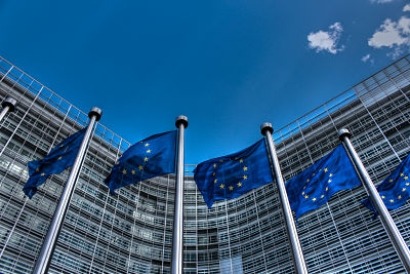
The directive is instrumental in achieving the goal of reducing greenhouse gas emissions by 55 percent by 2030 and achieving climate neutrality by 2050. It is a key framework for the European energy transition, calling for the active promotion and deployment of solar heating and cooling, as a ready-to-deploy technology enabling the decarbonisation of a vast number of buildings, district heating and industries.
The revised framework has been welcomed by trade association Solar Heat Europe, which has recently released its Market Outlook 2022, in which it reported an overall increase of sales across Europe of +12 percent in 2022 vs 2021, reaching a total installed capacity of 41.5 GWth, including +43 percent in Italy and +36 percent in France.
With more than 10 million households already equipped with solar thermal, the sales of solar thermal installations continued to grow for the third consecutive year, with a total of +2.2 million square metres of solar collectors installed in Europe in 2022, major growth of PVT sales in Germany, Italy and Spain, a doubling of the sales of solar heat plants for industries expected in the period 2023-2026, and major solar district heating networks currently in construction (in Germany, The Netherlands notably).
“The adoption of the Renewable Energy Directive revision is a crucial milestone of Fit for 55” said President of Solar Heat Europe, Guglielmo Cioni. “Solar heat contributes directly to several of the targets set for 2030: 42.5 percent of RES in the EU energy consumption; the obligation for Member States to increase the share of RES in H&C; the decarbonisation of buildings, district heating, and industry. These measures must be swiftly implemented by Member States to meet EU climate targets and ensure energy security and affordability. However, we stress the importance of introducing more binding targets in future legislation, especially in industry and district heating, to accelerate further towards full deployment of investments. Our factories, based all over Europe, are ready to ramp up production and deploy. The data that we release today indicates how influential Member States’ role can be to give the right market signals. The solar thermal sector will continue to work hand in hand with authorities in all EU countries to grow the share of decarbonised heating and cooling solutions for citizens and industries thanks to the sun’s energy, leading us to energy security and affordability.”
The revised Directive includes several changes that are of direct relevance for solar heat and renewable heating:
Article 3 raises the EU binding target for the share of renewable energy in 2030 to 42.5 percent, a 10-point increase from the current text, coupled with the indicative target to aim for 45 percent.
Article 23 introduces a binding target for the share of renewables in the heating and cooling sector: Member States will have to increase the share of renewable in the sector by at least 0.8 percentage points as an annual average calculated for the period 2021 to 2025 and by at least 1.1 percentage points as an annual average calculated for the period 2026 to 2030. While the target is not ambitious in quantitative terms, it is now a binding target, which constitutes a legal obligation for all Member States.
Article 24 raises the indicative target for the share of renewables and waste heat in district heating and cooling from a 1 percentage point increase to 2.2 percentage points, calculated on average for the period 2021-2030.
Articles 15a and 22a (new) introduce two new indicative sub-sectoral targets for buildings (49 percent share of renewables in 2030) and industry (average increase of 1.6 percentage points for the periods 2021-25 and 2026-30).
Finally, several articles on permitting were added in May 2022 as amendments to the original proposal. Article 15c introduces renewable acceleration areas, to be designated by 27 months after the entry into force, where permit-granting shall be further streamlined and accelerate. Article 16c contains specific provisions regarding permitting for the installation of solar energy equipment (and co-located energy storage assets), which should not exceed three months, provided that the primary aim of such structures is not solar energy production or storage. Furthermore, the permit-granting process for the installation of solar energy equipment with a capacity of 100 kW or less shall not exceed one month, and the absence of a reply by the relevant authorities shall result in the permit being considered as granted.
The Directive will enter into force on the 20th day following the publication in the Official Journal of the European Union. Member States will then have 18 months to transpose the provisions into their national legislation, except for the articles on permitting, which shall be transposed by 1 July 2024.
For additional information:

